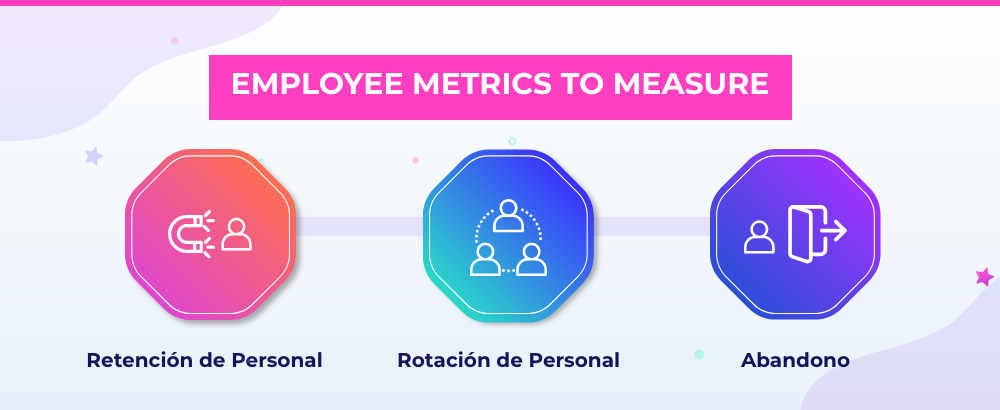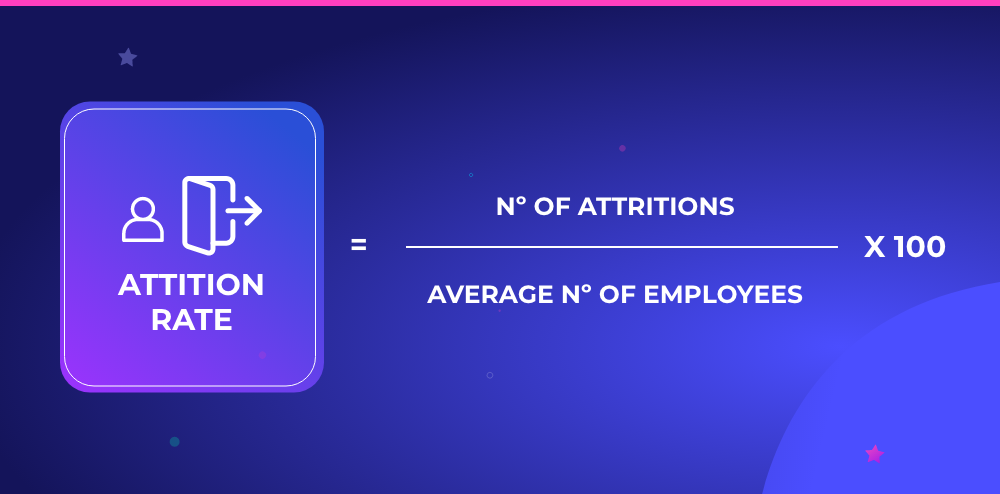The Importance of Employee Turnover Rate Which Should Not Be Overlooked
Written by María Eugenia Raffaele
Measuring employee turnover is one of the most crucial calculations that Human Resource Management (HRM) is tasked to do. Turnover rate is the total percentage of employees that leave an organization within a specific timeframe. One of the major challenges of HR management is controlling and decreasing the turnover rate.
A high turnover rate can become an exorbitant expense for any organization because vacancies left unfilled will eventually have to be filled with new replacements. Businesses today pay special attention in determining the turnover rate ahead of time. It can be an extremely daunting and time-consuming task for hiring managers to fill open positions. Vacancies left open for a long time can ultimately have an adverse effect on the company as a whole.
The good news, however, is that turnover rates can be limited by breaking down the reason why they occur in the first place. Both, the voluntary and involuntary turnover rates can be decreased by making sound hiring decisions. One reason why most employees leave their positions is due to dissatisfaction that occurs while working at an organization. Other reasons may be due to a career change, a better opportunity at a different company, etc. One approach to limiting the danger of willful turnover is to conduct personality tests. Using a personality test in the workplace may help the employer understand and get to know the employee better in order to find out whether the position is the right match for the person. A good example could be if the candidate applied for a position of sales or marketing and he/she may be an introvert. This personality trait could present a challenge when performing certain tasks required by the position. It may even cause the employee to feel discouraged resulting in them leaving the organization.
Calculating the turnover is one of the most crucial things in the HR management department as it has a great impact in determining the future of the employee availability. However, it is also relatively simple to do the math. Let’s suppose your company has hired 100 employees and 15 resign for some reason or another, now the turnover rate of your company if 15 percent. However, most companies have a tendency to use more detailed calculations to analyze what is the underlying reason for the turnover. For instance, there are five employees who plan to leave your company in the month of June and four more leave in October. Now your annual turnover is 10 percent but the average monthly turnover is 8.3 percent.

The employee turnover is further classified into two more categories such as voluntary and involuntary turnover. This might include even more clearly defined reasons why employees decide to quit, such as unfulfilled expectations, unchallenged, lack of knowledge, poor performance, or that they have found a better job. One more reason why companies calculate the turnover rate is that it also determines hiring costs, training requirements or estimating staff time devoted to recruitment activities.
SOME HIGHLY IMPORTANT EMPLOYEE METRICS TO MEASURE

Here is a rundown of some of the extremely important metrics that HR managers often overlook and do not include in the measurements.
1. The overall Retention Rate of Employees
One basic use of the overall retention rate of employees is that it provides incredible knowledge of the well-being of your team, the department and the company as a whole. The essential inquiry you are making is ‘what is going to be the strength of your employees in the team, department and the company?’
By and large, the retention rate of employees can be ascertained by dividing the present number of employed personnel by the quantity of workers toward the beginning of your estimation period, and this should be multiplied by 100 to find out the rate of retention. You can choose the timeframe of the period to be measured in months or years, but most of organizations prefer doing it annually.

2. The Overall Turnover Rate of The Employees
Just as essential as it is to determine the retention rate of employees, it is equally important to determine the overall turnover rate of employees as it indicates the health and the total well being of the team.
Now to enumerate the overall turnover rate of the employees first you have to take in consideration the total toll of the employees that have quit the job for some reason. Next step is to divide the number of individuals who left the organization by the average number of individuals over that specific time period, and this, in effect should be multiplied by 100 to get the rate.
There are a lot of organizations that use of both, the turnover rate and the retention rate identically. However, the Society of Human Resources Management distinguishes between the two.

3. The Attrition Rate or The ‘Churn’ Rate
Basically, attrition rate alludes to the employee or staff turnover, however in a more extensive sense, it is the estimation of the quantity of people or things that clear or move out of a larger and more aggregate gathering over a predefined time span. This is often referred to as the churn rate by the human resource professional to decide on the organization’s overall capacity to successfully retain their employees. The attrition rate is also used by the professionals in the advertising world as a figure that focuses on the organization’s capacity to retain clients or to extend the quantity of new deals important to keep up the present state of affairs, representing the client attrition.
To determine the attrition rate for any given month or a specific time period, first you have to know the total number of employees at the beginning of the month/ time period. Then, you need to know the number of new employees who joined that month/ time period. Finally, determine the number of employees who left. The number of employees who left is the number of attritions.
To be more specific, here’s the formula: Attrition Rate = Number of Attritions/Average Number of Employees *100.

4. Voluntary Turnover and Involuntary Turnover
The worse scenario occurs in the case of voluntary turnover as this is something unforeseen. Voluntary turnover is that which occurs when employees willingly decide to leave their positions at a given organization. The vacancy left by the employee can be very costly for the organization. Since this situation is not anticipated it can bring added costs associated with the whole recruitment process and hiring of the new employees as a substitute. This type of turnover is often the result of an unsatisfactory routine lead by the employees.
Involuntary turnover is relatively less harmful because in this case, the employees are not the ones making the decision to leave the position. In fact, employees, in this case, are made to leave the organization usually because of their failure to deliver to the best of their ability, or because of some conflict or any other reason inflicted by another source than the employee.
However, both turnover categories are usually emphasized in the team, management, and the hiring procedures. These metrics are usually avoided and not given the attention they require, which would make the analysis relevant to future hiring processes.
5. Retention Rate of Stars
When we talk about stars, we talk about employees who go the extra mile, self-motivated, high performers, they possess the right attitude and drive to overcome any tough situation thrown their way. These stars are pretty noticeable and can be spotted from afar. So when an organization is blessed to have a bunch of stars, they want to make sure these stars stay with them no matter what. The importance of analyzing the rate of the retention of these stars is extremely high as it leads to determine the overall environment and processes. You want to ensure these individuals are being given the right set of challenges and subsequently the rewards that they deserve in order that they continue to be engaged and motivated. You have to put special consideration on their compensation packages and see if they are being provided the leadership positions as per their experience and performance. Because keeping the retaining rate of the stars high is the main objection of the whole retention program.

To ensure your organization has followed the guidelines and procedures when an employee resigns, the organization must focus on calculating these metrics on a monthly basis in order on track. However, if these metrics are overlooked, you might encounter some great challenges and the puddle of difficulties becomes deep. Although this can be a daunting task, that is where technology comes to the rescue. With the substantial experience in providing the best HR solutions and advice, StarMeUp knows how to help companies get the turnover rates and the detailed explanation to keep you on the right track. StarMeUp makes sure that clients are provided the complete set of information and recommendations that they require to add value and sustainability so that their organization sees growth and development in the long run.